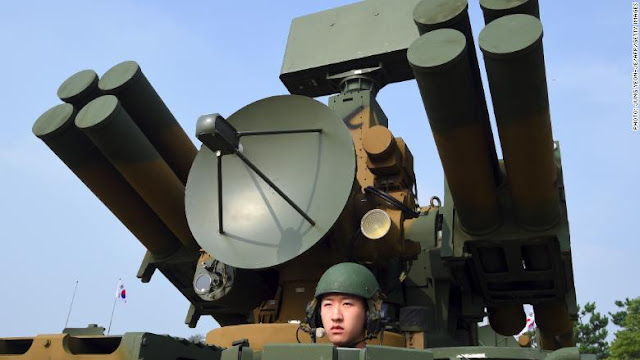Global arms sales increased for the first time in five years in 2016 as rising geopolitical tensions fueled defense spending.
Sales by the world's 100 biggest arms producers increased 1.9% from the previous year to reach $374.8 billion, according to the Stockholm International Peace Research Institute (SIPRI).
"The growth in arms sales was expected and was driven by the implementation of new national major weapon programs, ongoing military operations in several countries and persistent regional tensions that are leading to an increased demand for weapons," the group said in its report.
Arms producers in South Korea, which increasingly supply the country's military, saw the largest percentage increase among developed countries.
The spending splurge reflects fears of a potential conflict with North Korea. Sales by South Korean firms increased by over 20% in 2016, to $8.4 billion.
While consumer purchases are included in the sales figures, national governments are by far the largest purchasers of arms and weapons systems.
American firms remained at the top of the industry in 2016, with sales increasing by 4% to more than $217 billion. That was 58% of the global total.
American defense firm Lockheed Martin -- the world's largest producer -- saw sales surge 11% in 2016, thanks to increased deliveries of its F-35 fighter and its acquisition of helicopter producer Sikorsky.
Aude Fleurant, director of the Arms and Military Expenditure Program at SIPRI, said that U.S. growth was likely to continue. President Trump wants to boost the Pentagon's budget and refurbish the U.S. nuclear arsenal.
Sales by Russian firms increased 3.8% to $26.6 billion, a slower expansion than in recent years.
Moscow has boosted spending in order to overhaul its military capabilities, but procurement has slowed recently because of the country's strained finances.
"It's a money issue," said Fleurant. "They have been hit very severely by the drop in oil and gas prices."
Fleurant pointed to regional disputes, such as the standoff over islands in the South China Sea, as a major source of increased arms sales.
The area is home to crucial shipping lanes, and it's rich in oil and gas reserves. China, Taiwan, Vietnam, the Philippines, Malaysia and Brunei have all made territorial claims to islands in the area.
Tensions have grown since 2014 as China has turned sandbars into islands, equipping them with airfields, ports and weapons systems and warned U.S. warships and aircraft to stay away from them.
"Countries like Vietnam order submarines and maritime patrol aircraft, because of what they consider China's assertiveness in these territorial disputes," said Fleurant.




Comments
Post a Comment